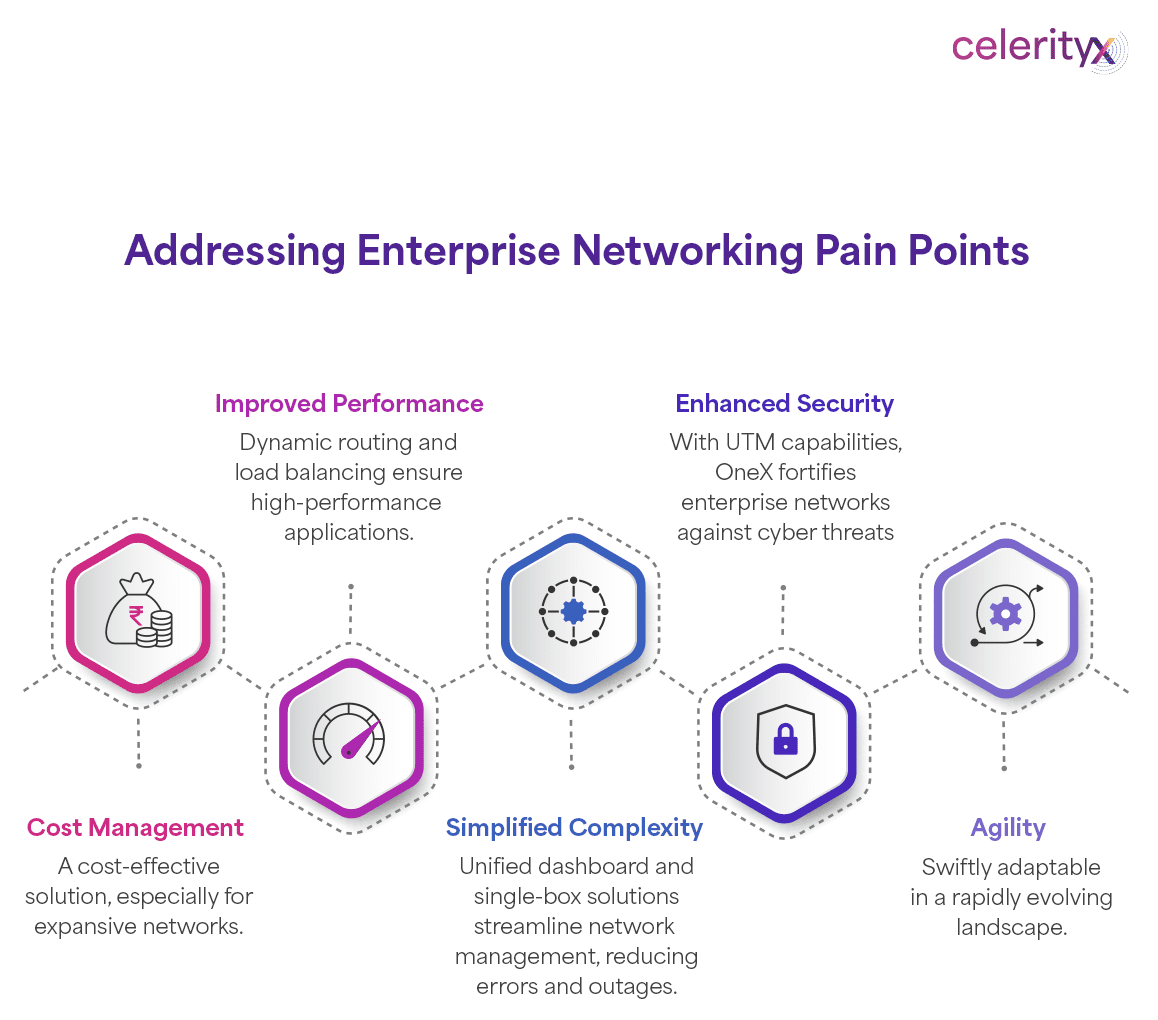CASE STUDY SUMMARY
BRIDGING THE CONNECTIVITY GAP
Embark on a journey into the intricacies of leveraging Broadband (BB) as an underlay for Software-Defined Wide Area Network (SD-WAN) with this case study. Let us explore the complexity of using broadband as an underlay to obtain the cost economics from this mechanism. Enterprises face unique hurdles in their transformation from MPLS to Broadband, like constraints of IP addresses, IPV4 scarcity and the operational intricacies associated with dealing with multiple local operators.
Let us explore how the OneX solution helps resolve many of these challenges by providing an optimal migration plan to SD-WAN over BB underlays.
BRIDGING THE CONNECTIVITY GAP
Embark on a journey into the intricacies of leveraging Broadband (BB) as an underlay for Software-Defined Wide Area Network (SD-WAN) with this case study. Let us explore the complexity of using broadband as an underlay to obtain the cost economics from this mechanism. Enterprises face unique hurdles in their transformation from MPLS to Broadband, like constraints of IP addresses, IPV4 scarcity and the operational intricacies associated with dealing with multiple local operators.
Let us explore how the OneX solution helps resolve many of these challenges by providing an optimal migration plan to SD-WAN over BB underlays.
Common Problems of the BB Underlay
Leveraging Broadband (BB) as an underlay enables the development of a cost-effective foundation for Software-Defined Wide Area Networks (SD-WAN) through high throughputs and pervasive reach. However, the path is not without its challenges, weaving a host of complexities that demand careful consideration:
- IP Address Constraints: Within the BB landscape, the typical allotment of /30 IP addresses is often constrained, owing to the Point-to-Point over Ethernet (PPPOE) technology. This creates difficulty in configuring applications requiring diverse IPs, such as the IPSec VPN and Direct Internet Access, leading to migration difficulties from existing MPLS networks to SDWAN solutions.
- IPV4 Scarcity Woes: Traditional IPV4 ecosystem leads to scarcity of addresses for static IP-driven configurations. This scarcity not only leads to incremental costs but also causes procurement delays in migration. Additionally, depending on static IPs also delays the configuration of paths for SDWAN deployments, preventing you from fully leveraging the strength of SDWAN networks.
- LAN IP conflicts: Broadband Service providers configure their LAN IPs as standard 192.168.1.1. Thus, when using multiple service providers, failover of links can create an IP conflict as well as issues in any micro-segmentation features being used with the SDWAN solution.
- Operational Lock-in Dilemmas: The reliance on operators for static IPs casts a shadow of operational lock-in, rendering flexibility a scarce commodity. Every change is a complex endeavor, making the operational landscape a challenging terrain to navigate.
- Dependence on PPPoE: Increasingly, ISPs are migrating from GPON (Gigabit Passive Optical Network) technologies and, as a result, migrating to Dynamic Host control Protocol (DHCP). This makes configuration dependent on bridge modes using PPPoE unviable and requires ensuring that selected SDWAN architecture supports DHCP.






